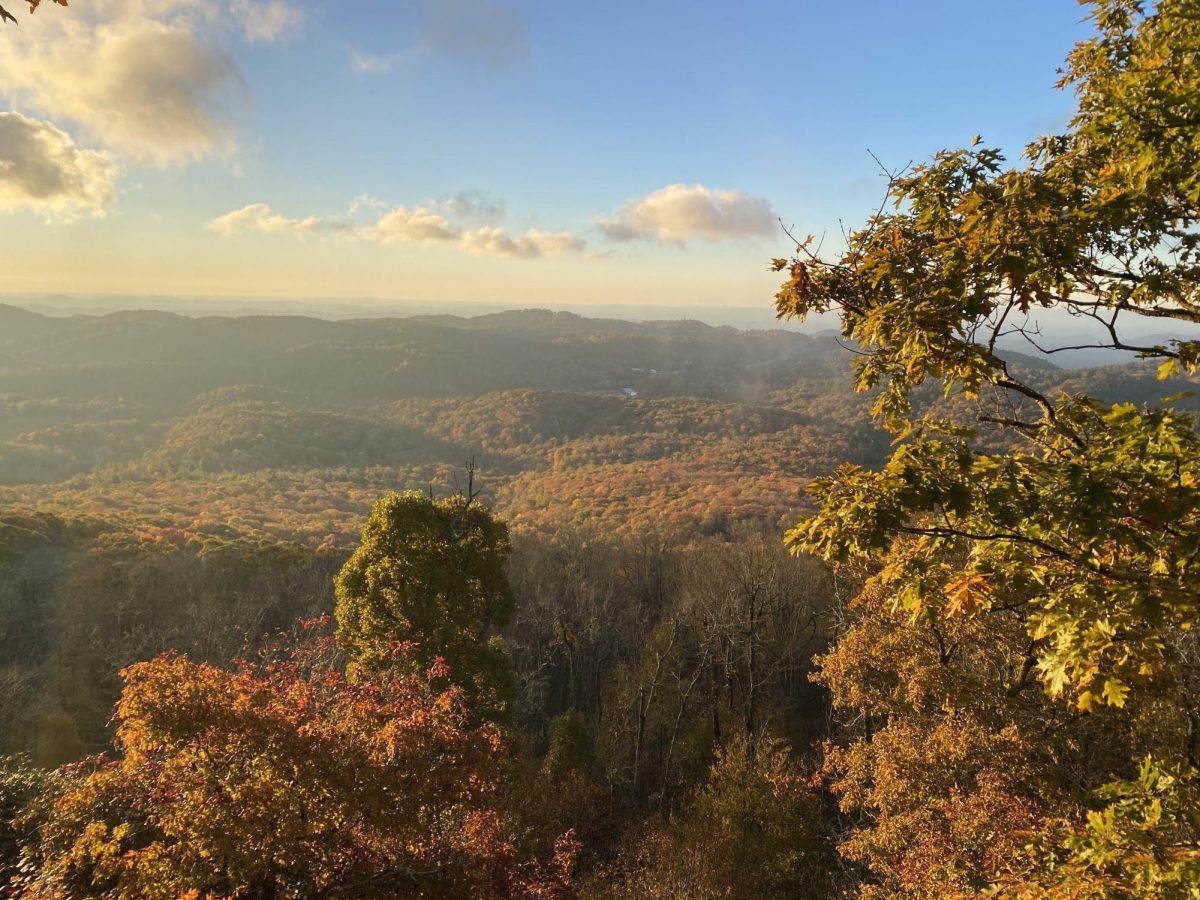In recent years, a surge of statements have found their way into email signatures, corporate websites, classrooms, concerts and restaurants. Statements recognizing historical and present claims to land by Indigenous peoples, or land acknowledgments, are not a new practice but they have risen in popularity in recent years.
Today, nearly every university in the UNC System displays a land acknowledgment, but what do these statements mean and who are they intended to serve?
Although they are widely visible, the topic of land acknowledgments can be rather divisive. Some believe land acknowledgments are an important step towards recognizing Indigenous history and generating conversation. Others hold the stance that they are an example of performative activism and participate in the misrepresentation of Indigenous history.
Opinions vary among stakeholders and within Indigenous communities, creating a lively debate over recognition and representation.
According to the California Indian Culture and Sovereignty Center, land acknowledgments are formal statements that recognize and respect the stewardship and relationship between Indigenous peoples and their traditional lands.
The primary purpose of land acknowledgments is education, said Brett Riggs, Sequoyah Distinguished Professor of Cherokee Studies at Western Carolina University. For many, it’s their first time hearing about Indigenous groups, their history and their role in contemporary North Carolina, Riggs said.
Riggs, an archaeologist who participated in the drafting of the WCU land acknowledgment, said land acknowledgments are important introductory statements, but more must be done.
“The education process initiated by the land acknowledgment really needs to continue beyond that,” Riggs said.
Expanding upon Indigenous cultures and histories and directly involving contemporary communities wrapped up in acknowledgments is essential action, he said.
“You can’t just have a land acknowledgment and say ‘Good, job here is done.’ What do we do to follow up?” Riggs said. “It’s a good first step but we can’t just stop with that.”
Sky Sampson, Secretary of Education for the Eastern Band of Cherokee Indians, is an advocate for land acknowledgments.
“The point of any land acknowledgment is to open the door for conversation,” Sampson said.
Until recently, Sampson served as the director of the Cherokee Center at WCU and served on the committee to draft WCU’s land acknowledgment.
She sees “plenty of evidence that recognition and honoring those who are there before you and giving people a sense of place is definitely needed, wherever you are.”
Yet, Sampson said land acknowledgments can also be tokenized.
“I do think that some organizations and some institutions that don’t have that Indigenous perspective can sometimes kind of use it as a token which basically would mean that they want to check a box and say that they’ve done that. But they don’t encourage more conversation and it kind of ends there,” she said.
It’s supposed to encourage people to take charge and use the land acknowledgment to “bring culture into the room.”
Sampson believes consulting archaeologists and historians is an essential step in accurately representing the past. This kind of education is not always easy.
“Someone said to me one time and I’ll never forget it, ‘If we’re not making people uncomfortable, then we’re not doing our jobs,’” Sampson said. “But it’s just because they’re learning and they’re taking in new context and information that may change their perspective.”
Land acknowledgments can be an important educational tool for people with little knowledge about Indigenous peoples, said Dana Powell, associate professor at the National Dong Hwa University Center for International Indigenous Affairs in Taiwan.
When she was an assistant professor of anthropology at App State, the vast majority of her students had “absolutely no background of education on the contemporary presence and life of the Indigenous peoples of North Carolina.”
Land acknowledgments are a lightning rod for many students and audiences to learn about the land beneath their feet that is historically Indigenous ground. They served as an opportunity to learn about vibrant, living Indigenous communities who may still lay claim to the land, Powell said.
While at App State, Powell served on the chancellor’s committee for land acknowledgment. The committee’s work began in 2020. Powell said her role as an anthropologist in the committee was to encourage the committee to slow down and think carefully about the debates surrounding land acknowledgments.
Powell said she and others on the committee brought forward some criticisms of land acknowledgments, including the Association for Indigenous Anthropologists’ call for a moratorium on land acknowledgments.
It’s important to recognize there are wide differences of opinion and internal diversity within Indigenous groups on the topic of land acknowledgments, Powell said.
Representation and recognition is difficult and conversations can be hard. “If it’s easy, it’s not activism,” said Allen Bryant, director of Indigenous communities at App State and a Cherokee Native himself.
Only writing a land acknowledgment is not activism and “the question Native people are going to have is ‘OK what comes next?’” Bryant said.
Land acknowledgments are almost exclusively backward looking, Bryant said.
“It’s all about sins of the past and failures of the past and a painful settler colonialist past,” he said.
If the acknowledgment is tied to a program of action, Bryant said, then it can become activism.
Bryant, who served on the committee to create App State’s land acknowledgment, said he is proud of App State’s plan of action and guidelines. He was initially hesitant to be part of the process because he tends to be suspicious of land acknowledgment statements.
At too many universities, corporations and organizations, land acknowledgments tend to be virtue signaling, Bryant said.
“It tends to just be, you know, putting some pretty words on paper that don’t connect to the lived reality of Native people,” he said. “If you’re not going to take the time to get it right, just don’t do it.”
But he was “pleasantly surprised” at the university’s process.
Bryant said land acknowledgments are an important reminder that contemporary Native people who still exist and whose stories need to be told.
“When you go to Cherokee you’ll see signs all around town. And the signs have a real simple message: We are still here. It’s a stark reminder that the Trail of Tears happened, Removal happened, Wounded Knee happened, genocide happened but Native people, Indigenous communites are still here,” Bryant said.
Land acknowledgments are a tool of visibility. Bryant said many Native college students report feeling invisible on campus and don’t feel seen or heard. Recognizing their identity “holds real power.”



